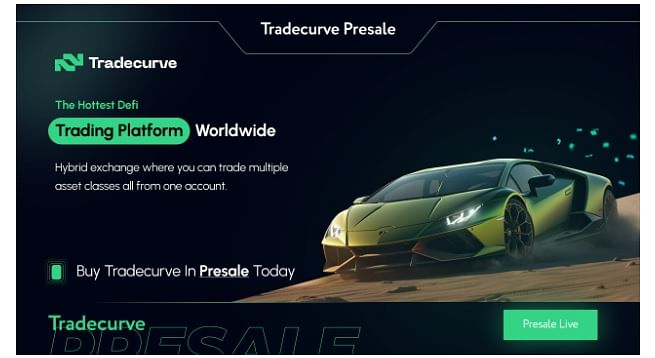In the dynamic world of cryptocurrencies, making informed trading decisions requires a deep understanding of the various digital assets available. Two such assets that have been making waves in the crypto space are Ethereum (ETH) and Cardano (ADA).
This article delves into these two cryptocurrencies, comparing their features, market performance, and potential for future growth.
Ethereum Overview: The Pioneer of Smart Contracts
Ethereum, launched in 2015, is an open-source, blockchain-based platform that enables developers to build and deploy smart contracts and decentralized applications (dApps).
Founded by Vitalik Buterin, Ethereum pioneered the concept of smart contracts, self-executing algorithms that operate without intermediaries. Its native cryptocurrency, Ether (ETH), is currently the second-largest by market capitalization.
Ethereum’s key features include its flexibility for dApp development and its widespread use in the DeFi (Decentralized Finance) sector. As of now, Ethereum’s price hovers around $1840.50, with a market cap of approximately $223.13 billion.

Cardano Overview: A Scientific Approach to Blockchain
Cardano, on the other hand, is a relative newcomer, launched in 2017. It’s a blockchain platform for smart contracts, like Ethereum, but Cardano’s development approach is unique in its emphasis on academic research and formal verification methods.
Cardano’s ADA token ranks seventh in terms of market cap. The platform is praised for its layered architecture, offering a separate layer for token transactions and a separate one for smart contracts. Currently, ADA’s price is approximately $0.30, with a market cap of around $10.59 billion.
Following in Ethereum’s footsteps, Cardano has since implemented smart contracts as well, recognizing their potential to revolutionize transactions.
Comparing Ethereum and Cardano
When comparing Ethereum and Cardano, several factors come into play. Ethereum’s strength lies in its first-mover advantage in smart contracts and its strong foothold in the DeFi sector. Launched in 2015, Ethereum adopted a “move fast, break things” philosophy, launching as a minimum viable product with future upgrades planned.
Cardano, on the other hand, took a more cautious and research-driven approach. Launched in 2017, it emphasized academic rigor and mathematical precision. Charles Hoskinson, a former Ethereum co-founder and the man behind Cardano, aimed to overcome Ethereum’s shortcomings with this new platform.
Ethereum’s first-mover advantage has given it a head start in the market. However, Cardano has taken a “slow and steady” approach, focusing on careful development and long-term sustainability. Ethereum continues to work on upgrades, with “the merge” being the most recent update on the horizon.
Cardano, while newer, has gained attention for its scientific philosophy and high assurance code. It’s designed to be scalable and sustainable, but it’s still in the process of rolling out its smart contract capabilities, which could impact its immediate adoption.
Ethereum vs Cardano: Price Potential and Adoption
Looking at the price potential of Ethereum and Cardano, both have shown significant growth. Ethereum, with its established platform and widespread use, has seen its price surge with the rise of DeFi. However, high gas fees on the network have been a concern.
Cardano’s ADA, while priced lower, has seen a substantial increase in price over the past year. The anticipation of smart contract capabilities and the potential for lower transaction fees compared to Ethereum could drive further demand.
Ethereum, being one of the earliest and most established blockchain platforms, has seen significant adoption. According to Bankless Times, surveys between October and December 2021 discovered that ownership levels for ETH had decreased from 28.2% to 24.4%.
Despite this slight decrease, Ethereum’s market dominance rose to 22% during the multiple bull rallies in 2021. Currently, this has decreased to 18.5%, partly due to increased competition from altcoins.
Cardano, despite being a newer entrant in the market, has seen a surge in adoption, particularly in the United States. According to an Inside Bitcoins article, over the past year and a half, Cardano has seen a nearly twofold increase in adoption in the United States.
Approximately 10 million Americans own ADA, equivalent to 7% of the adult population. Furthermore, the staking values of Cardano make up more than 70 percent of their circulating supply, a percentage significantly higher than for Ethereum, as reported by Statista.
Get Ahead of the Game: Explore the Promising Presale Gem Taking the Crypto World by Storm!
Is Cardano (ADA) a Better Option for Traders?
Whether ADA is a better option for traders than ETH depends on several factors. ADA does present a lower entry point, and the potential growth with the rollout of smart contracts is attractive. However, Ethereum’s established position and ongoing growth in the DeFi sector cannot be overlooked.
Traders should consider their risk tolerance, investment horizon, and the specific goals they have for their portfolio. It’s also crucial to keep an eye on market trends and developments in the crypto space.
In conclusion, both Ethereum and Cardano offer unique opportunities for traders. While Ethereum continues to be a dominant force in the DeFi sector, Cardano’s scientific approach and potential make it a compelling option.
The world of crypto trading is complex, but with careful strategy and a keen understanding of the market, it can offer significant opportunities.
ThePrint ValueAd Initiative content is a paid-for, sponsored article. Journalists of ThePrint are not involved in reporting or writing it.

